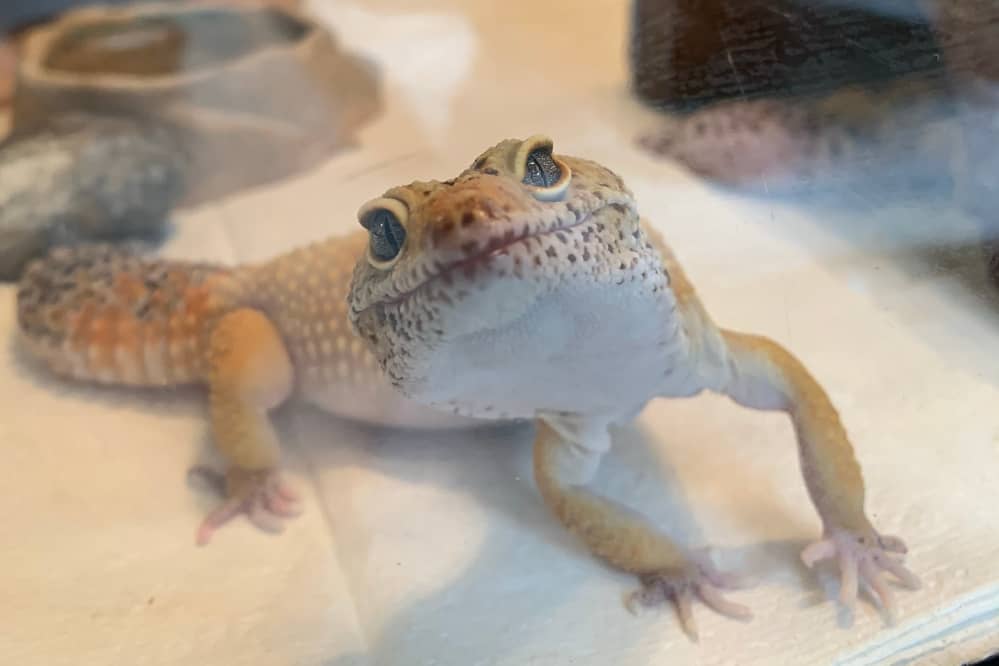Glass surfing is one of the peculiar behavior that leopard geckos exhibit that distinguish them from other household pets.
When a leopard gecko attempts to climb the glass wall of its enclosure while making paddling movements, that is referred to as glass surfing. Glass surfing in leopard geckos can be caused by mites, clod temperature, hunger, and a few other factors.
If you’re wondering what glass suffering is and why your leopard gecko is glass surfing, this article is for you. Discover everything there is to know about leopard geckos that glass surf, so read on.
What Is Glass Surfing?
Many reptile species, including leopard geckos, have been observed to engage in the strange behavior known as “glass surfing.” Glass surfing is the behavior of a leopard gecko when it stands on its back legs, places its belly along the glass of its enclosure, and paddles its front limbs in a manner similar to how people paddle a surfboard in an attempt to climb.
Leopard geckos occasionally rub their noses against the glass while glass surfing. There are various reasons why leopard geckos do glass surfing, and some of these reasons can be concerning for a leopard gecko owner.
Leopard geckos are not particularly good at climbing objects, especially glass, because they lack sticky pads under their feet and have tiny feet., as a result, glass surfing happens. The leopard gecko’s front limbs slide across the glass wall of its enclosure as it tries to climb it, giving the appearance that it is paddling a surfboard, hence the name glass surfing.
Reasons Why Your Leopard Gecko Is Glass Surfing?
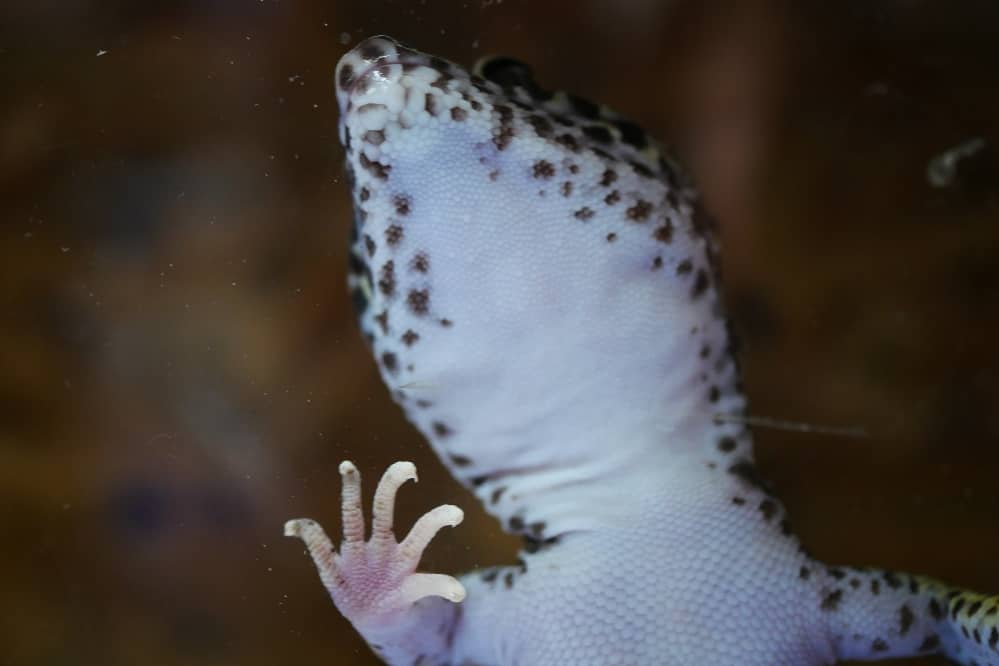
1. Boredom
Leopard geckos frequently do glass suffering because they are simply bored in their enclosure. However, leopard geckos’ glass surfing is not particularly alarming for this reason. Your leopard gecko might benefit from simple terrarium adjustments, additional obstacles, and modified terrain to address this issue. When leopard geckos are most active, which is generally at dusk and dawn, you will see them glass surfing out of boredom.
2. Hunger
Your leopard gecko may start to glass surf to get your attention if it is starving and needs food. Therefore, if you haven’t given your gecko any food and see it surfing on the glass, it’s time to do so. Feeding the appropriate amount of food at the right times can help solve this issue.
3. Cold temperature
Clod temperature in the cage can also be a contributing factor to your leopard gecko glass surfing behavior. If the temperature within the cage is cold, a leopard gecko may attempt to go closer to the heating lamps, which are typically placed directly above it, to gain more heat, and will begin glass surfing in the process. So make sure the temperature of the terrarium of your leopard gecko is in the ideal range.
4. Curious instinct
Leopard geckos are highly active reptiles with a natural desire to explore their surroundings. These adorable reptiles have large territories and travel great distances even in the wild. This curious instinct is one of the reasons why leopard geckos do glass surfing in an attempt to escape their enclosure to explore new territory.
5. Mites
Mites are one of the most serious causes of glass surfing in leopard geckos since they also create health issues. Despite being reptiles, leopard geckos are prone to developing mite infestation, which can be agonizing for them.
Mites deliver painful bites to the leopard gecko and will cause irritation and discomfort by walking on its body and getting into its eyes. In addition to making your gecko uncomfortable, mites can also make them weak and lethargic, and they can even make it lose its appetite.
When a leopard gecko’s body and enclosure are infested with mites, it will make desperate, glass-surfing attempts to escape. Glass-surfing caused by mites in leopard geckos will be more severe and recurrent than any other cause and will persist even after providing good food and making terrarium adjustments.
6. Other geckos
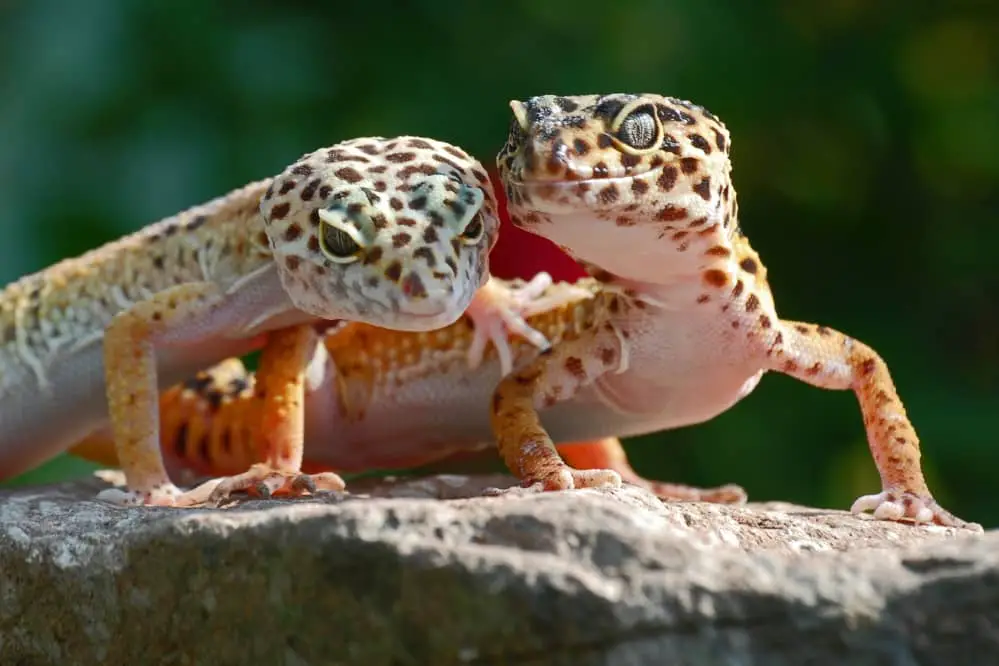
Leopard geckos, especially males, tend to be territorial, therefore if there are several of them in the same enclosure, they may attempt to get away from one another. When one leopard gecko dominates the enclosure, the others may begin to glass surf to avoid conflict
7. Improper enclosure size
Leopard geckos require plenty of living area, thus if the enclosure is not the right size, they may begin to glass surf.
8. Attractive surroundings
The leopard gecko may be drawn to anything outside of its enclosure that has vivid and flashy colors. The leopard gecko will therefore attempt to reach it and may begin to glass surf in the process.
9. Improper humidity
Low humidity can also be a reason your leopard gecko is glass surfing because when there is low humidity in the enclosure geckos can’t shed properly.
10. In an attempt to hide
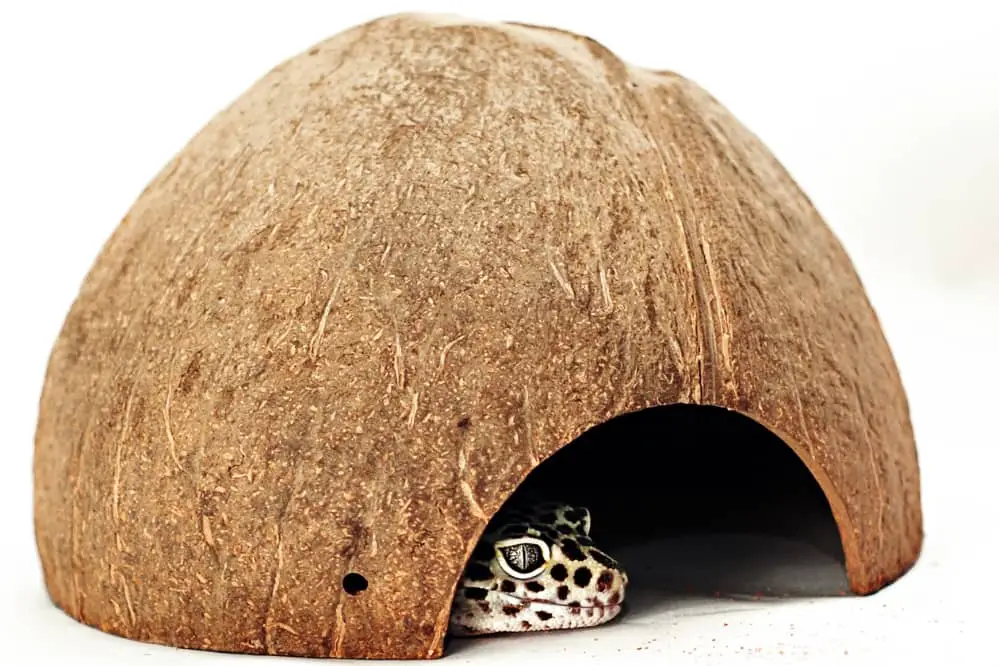
Leopard geckos are vulnerable creatures, and when they live in the wild, they prefer to hide in cracks and under rocks to avoid predators and harsh climates. That’s why they need hiding spots in their enclosure, and if they don’t have any, they might start glass surfing.
11. Searching for a mate
If a leopard gecko is looking for a mate and lives alone in the enclosure, it might start to do glass surfing to get out of the enclosure and find one.
12. Changes in their enclosure
Leopard geckos don’t like significant changes to their terrarium. Therefore, if you have made any adjustments, you might see your gecko glass-surfing. Reversing all of the changes to the enclosure can help reduce your leopard gecko’s tendency to surf the glass.
How To Stop A Leopard Gecko From Glass Surfing?
The following are some methods you can follow to stop or reduce glass surfing in leopard geckos:
- Make sure your gecko is fed appropriately and on schedule.
- Ensure the tank’s humidity and temperature are within the ideal range.
- Give your leopard gecko hiding places, and make its habitat enjoyable and intriguing for it.
- Verify that there are no mites in the tank and treat them if there are any.
Can Leopard Geckos Climb Glass?
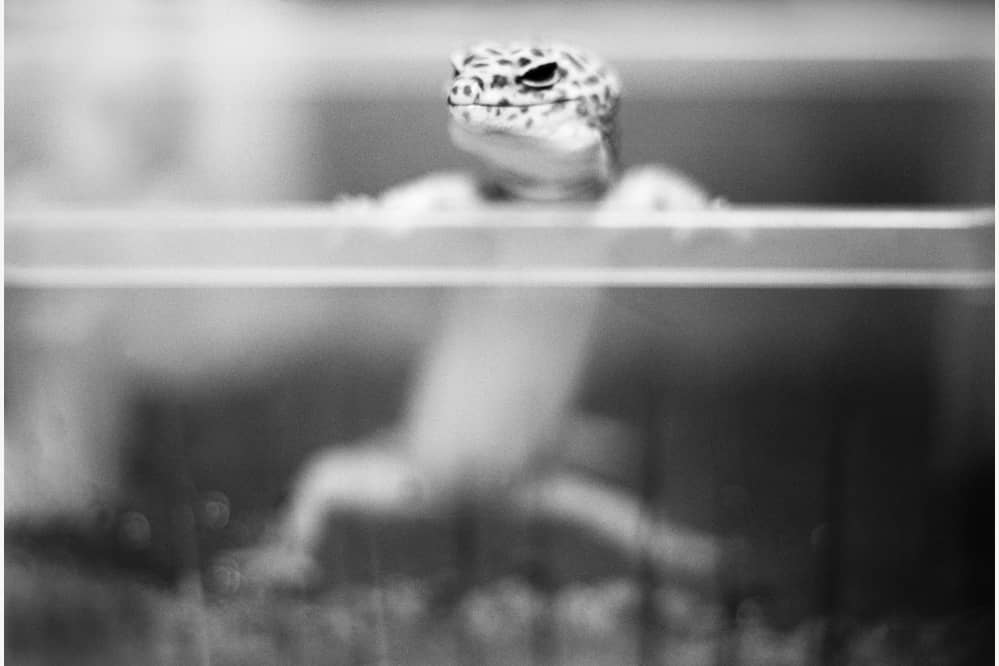
Generally speaking, leopard geckos are not good climbers, especially on flat surfaces like glass because they lack sticky pads under their feet. Leopard geckos cannot climb the glass of their enclosure due to the tiny size of their feet in relation to the rest of their body.
Leopard geckos are heavy, which also makes it much more difficult for them to climb the glass wall. Therefore, you don’t need to be concerned that your leopard gecko may climb the glass and escape the enclosure.
Do Leopard Geckos Do Glass Surfing At Night?
Leopard geckos can attempt glass surfing at night. Leopard geckos often are most active at twilight and dawn, however, you can see them glass surfing even when it is dark.
Summary
Glass surfing is a peculiar behavior observed in most reptile species, including leopard geckos. Leopard geckos glass surf for a variety of reasons, including mites, cold temperatures, having many geckos in the enclosure, and others. Glass surfing is generally not a cause for great concern, but there are some serious reasons for it, like mites.

